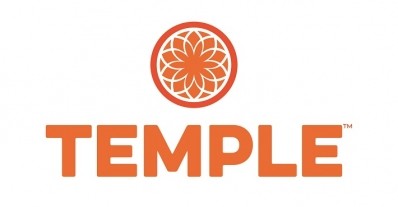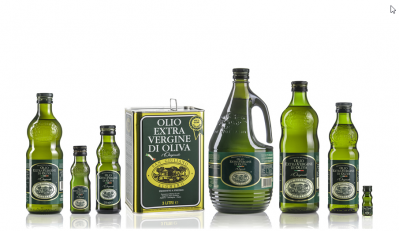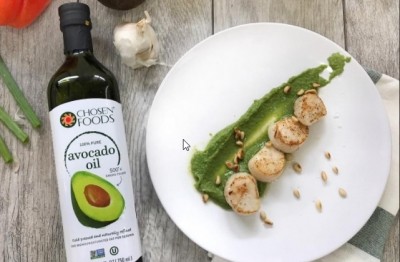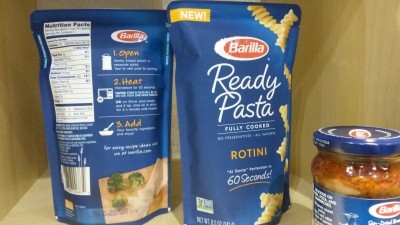Mutti marketing campaign seeks to ‘revolutionize’ the canned tomato aisle in the US
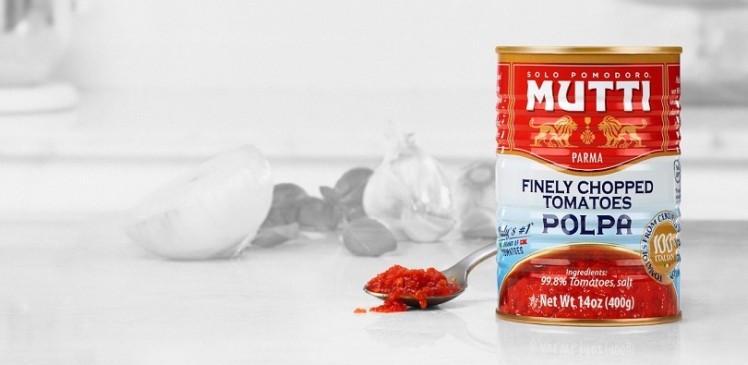
The campaign launched with Mutti’s flagship finely chopped canned tomatoes in a full-page ad in Bon Appetit’s October Entertaining issue and features food influencer and radio host Kate Schlientz of IntoxiKate. The ad is complemented by several videos the will be shared across its social media channels, a sharable summer menu using Mutti products on Epicurious and additional recipes on a microsite www.madewithmutti.com.
The campaign also includes local marketing efforts in Chicago, Boston and Albany, NY, with programming and a presence at outdoor and transit shelters, as well as in-store promotions, cooking events, sampling and signage.
A challenging goal to awaken a sleepy category
While the marketing campaign is taking a multi-faceted approach that will create many touch points, it still has its work cut out given how crowded the US canned tomato segment is and how Americans currently think – or don’t – about canned tomatoes.
When Mutti first entered the US market in 2012 it faced “the absolutely daunting” task of carving out space in a “sleepy category” with more than 1,000 stock-keeping units and a consumer-base “with very low involvement in the purchasing decision,” Katia Facchetti, president of Mutti USA, told FoodNavigator-USA.
“In many ways, the canned tomato category in the US is a commoditized category in which consumers do not understand the difference between the products available” in part because “the majority of consumers do not taste tomatoes out of the can and do not compare two cans of tomatoes to see if there is any difference,” she explained.
Seizing opportunities to disrupt canned tomatoes
By pushing shoppers to taste the difference of Mutti, Facchetti said, “there is a real opportunity to disrupt the category.”
Mutti got a jump start on this by conducting a small blind taste test comparing consumers’ favorite brands with Mutti, which revealed Mutti as the winner more often than not, Facchetti said.
She added the brand also is disrupting the category do by offering a premium product that meets many of consumers’ demands for clean, simple and flavorful ingredients.
“Consumers really care about ingredients and the whole foodie movement … has created an opportunity to have a conversation with consumers about how our products are clean label with no additives, no preservatives and fundamentally almost all of our products are just tomatoes and salt,” Facchetti said.
They also deliver on the “gold standard” of flavor set by fresh tomatoes picked in the summer, she said. “We have a patented process that allows us to essentially minimally heat the tomatoes, which allows us to have very fresh tasting tomatoes … that are the closest you can get to a fresh tomato picked in the prime of summer.”
Positioning canned tomatoes as vibrant and alive
This messaging plays out in the early stages of Mutti’s marketing campaign, which tackles head on negative perceptions Americans hold of canned tomatoes, Facchetti said.
She explained that consumer research conducted by the brand found that “fundamentally many consumers consider canned foods dead,” which is an “interesting juxtaposition to their perception that tomatoes are super vibrant and alive and have a lot of energy in them.”
Part of this disconnect comes from marketing that shows food as highly stylized and tidy, when in reality cooking with tomatoes is messy and vibrant, Facchetti said.
“We wanted to get across the sense of the freshness of the tomato jumping out of the can and the fact if you taste our product, it tastes like you just squished a tomato into a can. It doesn’t taste dead. It tastes alive. It tastes vibrant. It has an aroma and a beautiful red color – just like a fresh tomato,” she said.
To convey this, Mutti created black and white print and digital ads where only the contents and can of their products are a in color – creating a striking visualization. In online videos it shows recipes featuring the tomatoes bubbling, being poured on pizza crusts and being consumed straight out of the can.
The campaign also repositions canned tomatoes as a premium ingredient by placing ads in Bon Appetit, which has “exactly the right consumer groups for us,” Facchetti said.
She explained: “In Italy, Mutti is a premium brand and in a country where disposable personal income is extremely limited, consumers there still spend 25-30% more for a can of Mutti. And we are trying to create that same premium brand for a product that is a staple in American households and used in so many dishes … by targeting foodies,” like those who read Bon Appetit.
Mutti is off to a strong start
While Mutti has set an ambitious goal in America, it was already well on its way before launching the ad campaign.
“We are doing really well here. We were one of the top 10 fastest growing brands in the category last year and we have a strong presence in the East, Northeast, Chicago and parts of California,” Facchetti said.
But she acknowledged that “we have a lot more opportunity to grow nationally” and expand distribution in new retail stores. She said the campaign should help convince retailers that currently stock five to seven SKUs of canned tomatoes to add Mutti as a premium product that will help draw in consumers and raise their overall basket ring.
With this strategy, Facchetti said she expects the Mutti USA business to double in the next two years “at a minimum” and continue to grow in the specialty gourmet channel and eventually penetrate mainstream grocery and foodservice.
“We are just getting started,” she added.
